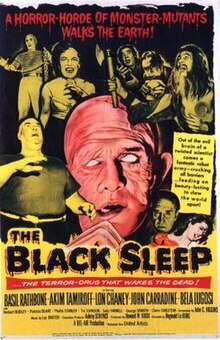
Béla Ferenc Dezső Blaskó, known professionally as Bela Lugosi, was a Hungarian–American actor, best remembered for portraying Count Dracula in the 1931 horror classic Dracula, Ygor in Son of Frankenstein (1939) and his roles in many other horror films from 1931 through 1956.

Edward Davis Wood Jr. was an American filmmaker, actor, and pulp novel author.

William Henry Pratt, known professionally as Boris Karloff and occasionally billed as Karloff the Uncanny, was an English actor. His portrayal of Frankenstein's monster in the horror film Frankenstein (1931) established him as a horror icon, and he reprised the role for the sequels Bride of Frankenstein (1935) and Son of Frankenstein (1939). He also appeared as Imhotep in The Mummy (1932), and voiced the Grinch in, as well as narrating, the animated television special of Dr. Seuss' How the Grinch Stole Christmas! (1966), which won him a Grammy Award.

Philip St. John Basil Rathbone MC was an Anglo-South African actor. He rose to prominence in the United Kingdom as a Shakespearean stage actor and went on to appear in more than 70 films, primarily costume dramas, swashbucklers, and, occasionally, horror films.

Bela Lugosi (1882–1956), best known for the original screen portrayal of Bram Stoker's Dracula in 1931, performed in many films during the course of his 39-year film career. He appeared in films made in his native Hungary, Germany and New York before re-locating to Hollywood in 1928. Films are listed in order of release.

The Black Cat is a 1934 American pre-Code horror film directed by Edgar G. Ulmer and starring Boris Karloff and Béla Lugosi. It was Universal Pictures' biggest box office hit of the year, and was the first of eight films to feature both Karloff and Lugosi. In 1941, Lugosi appeared in a comedy horror mystery film with the same title, which was also named after and ostensibly "suggested by" Edgar Allan Poe's short story.
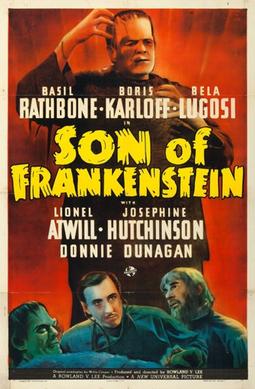
Son of Frankenstein is a 1939 American horror film directed by Rowland V. Lee and starring Basil Rathbone, Boris Karloff and Bela Lugosi. The film is the third in Universal Pictures' Frankenstein series and is the follow-up to the 1935 film Bride of Frankenstein. Son of Frankenstein stars Rathbone as Baron Wolf von Frankenstein who, with his wife Elsa and son Peter, returns to his late father's estate. Near the castle lives Ygor, a crazed blacksmith whose neck was broken in an unsuccessful hanging attempt. Among the castle's remains, Frankenstein discovers the remains of the Monster and decides to try to save his family name by resurrecting the creature to prove his father was correct. He finds, however, the Monster only responds to Ygor's commands.
John Clarence Higgins was a Canadian-American screenwriter.

Black Friday is a 1940 American science fiction horror film starring Boris Karloff and Bela Lugosi.

The Black Cat is a 1941 American comedy horror and mystery film directed by Albert S. Rogell and starring Basil Rathbone. The film was a hybrid of style: being inspired by comedy "Old Dark House" films of the era as well as the 1843 short story "The Black Cat" by Edgar Allan Poe. It stars Basil Rathbone as Montague Hartley, the head of a greedy family who await the death of Henrietta Winslow so that they can inherit her fortune. When she is found murdered, an investigation begins into who might be the culprit. Alongside Rathbone and Loftus, the film's cast includes Hugh Herbert, Broderick Crawford, and Bela Lugosi.
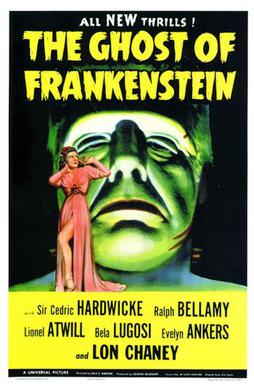
The Ghost of Frankenstein is a 1942 American horror film directed by Erle C. Kenton and starring Cedric Hardwicke, Lon Chaney Jr. and Bela Lugosi. It is the fourth film in the Frankenstein series by Universal Pictures, and the follow-up to Son of Frankenstein (1939). The film's plot follows the previous film's: Frankenstein's Monster and his companion Ygor are chased out of town. They go to another small town to encourage the younger son of Henry Frankenstein to continue his father's experiments, so that Ygor can have revenge against his enemies and his brain transplanted into the Monster's skull.

House of Dracula is a 1945 American horror film released and distributed by Universal Pictures. Directed by Erle C. Kenton, the film features several Universal Horror properties meeting as they had done in the 1944 film House of Frankenstein. The film is set at the castle home of Dr. Franz Edelmann, who is visited first by Count Dracula and later by Larry Talbot, the Wolf Man, who are trying to cure their vampirism and lycanthropy, respectively. Talbot is eventually cured, which leads him to discover the body of Frankenstein's monster in a cave below the base of the castle. Edelemann takes the monster's body back to his laboratory but finds Count Dracula has awakened and by attacking his assistants, he captures Edelmann and forces a reverse blood transfusion, which gives Edelmann a split personality and makes him a killer.
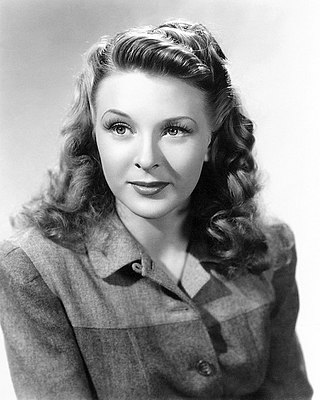
Evelyn Felisa Ankers was a British-American actress who often played variations on the role of the cultured young leading lady in many American horror films during the 1940s, most notably The Wolf Man (1941) opposite Lon Chaney Jr., a frequent screen partner.

Yangtse Incident: The Story of H.M.S. Amethyst (1957) is a British war film that tells the story of the British sloop HMS Amethyst caught up in the Chinese Civil War and involved in the 1949 Yangtze Incident. Directed by Michael Anderson, it stars Richard Todd, William Hartnell, and Akim Tamiroff.

Voodoo Island is a 1957 American horror film directed by Reginald Le Borg and written by Richard H. Landau. The film stars Boris Karloff, with a cast including Elisha Cook Jr., Beverly Tyler and Rhodes Reason. It is set in the South Pacific and was filmed on Kauai, Hawaii back to back with Jungle Heat. Adam West appears in a small pre-"Batman" uncredited role.

Voodoo Man is a 1944 American horror film directed by William Beaudine, and starring Bela Lugosi, John Carradine and George Zucco.
Revenge of the Zombies is a 1943 horror film directed by Steve Sekely, starring John Carradine and Gale Storm. Dr. Max Heinrich von Altermann, is a mad scientist working to create a race of living dead warriors for the Third Reich.
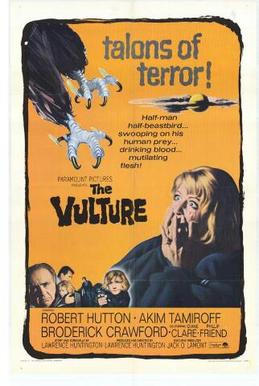
The Vulture is a 1967 horror film directed by Lawrence Huntington and starring Robert Hutton, Akim Tamiroff, Broderick Crawford, and Diane Clare.

Frankenstein is a film series of horror films from Universal Pictures based on the play version by Peggy Webling and the 1818 novel Frankenstein; or, The Modern Prometheus by Mary Shelley. The series follow the story of a monster created by Henry Frankenstein who is made from body parts of corpses and brought back to life. The rest of the series generally follows the monster continuously being revived and eventually focuses on a series of cross overs with other Universal horror film characters such as The Wolf Man. The series consists of the following films: Frankenstein (1931), Bride of Frankenstein (1935), Son of Frankenstein (1939), The Ghost of Frankenstein (1942), Frankenstein Meets the Wolf Man (1943), House of Frankenstein (1944), House of Dracula (1945) and Abbott and Costello Meet Frankenstein (1948).
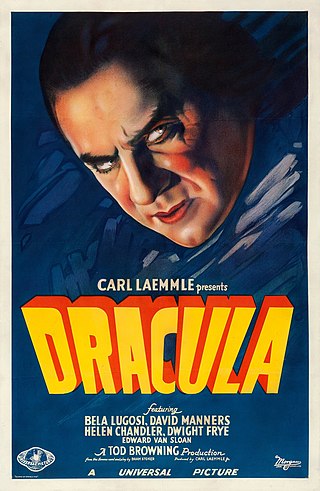
Dracula is a film series of horror films from Universal Pictures based on the 1897 novel Dracula by Bram Stoker and its 1927 play adaptation. The series is a loose collection of films, with historians stating that the films all reference characters, events or at least passing knowledge of the 1931 English-language production of Dracula, with historians noting that Dracula's Daughter and Son of Dracula are more closely related to the 1931 film while the character of Dracula would make smaller appearances in later films such as House of Frankenstein and House of Dracula. After Dracula's Daughter, the character of Dracula and other vampires in the series became more Americanized, starting with the release of Son of Dracula, and the later House of films. The character of Dracula appears in all the films outside of Dracula's Daughter, where he is portrayed by Bela Lugosi, Lon Chaney Jr., and John Carradine in the House of films.
